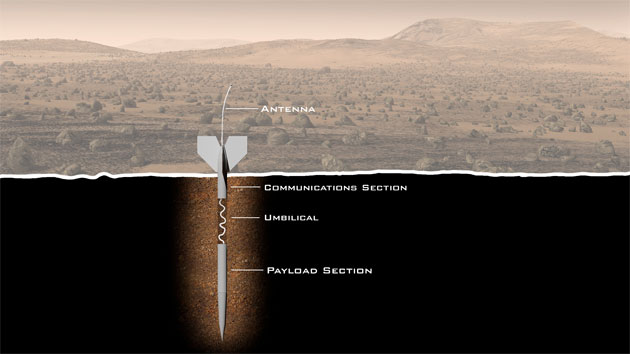ExoLance: crowdfunding project to find life on Mars below the planet’s surface from NASA veterans

A “dart” from a transport ship goes to Mars, and sticks into its surface. Next, an automatic laboratory in the building comes into operation, data on the results of the study are transmitted to the satellite.
Is there life on Mars? This question was first asked by scientists many decades ago. Despite the fact that now many are trying to find the answer to it, and the search is being conducted with the help of high-tech robots such as Curiosity, no yes or no can be said yet.
Life could have existed before when liquid water existed on the surface of the Red Planet. But now there are no signs of life on the surface, and no one has looked below the surface, except Curiosity, which has drilled several relatively shallow wells. Some NASA scientists believe that the search for life on the surface, anhydrous, actively irradiated by the Sun, will not succeed.
Life must be sought below the surface, probably at a depth of several meters. In order to prove their point of view, a team of scientists, including some NASA veterans, decided to create a new project, ExoLance .
The project provides for “firing” Mars with probes, whose shape is very similar to the shape of darts for playing darts. Such a dart, according to the plan, should stick a few meters into the soil of Mars (about 2 meters), and explore the soil at a depth. Then, after analysis by an automatic laboratory, the results will be transmitted to an orbiting satellite, which will transmit data already to Earth.
Darts of ExoLance are planned to be thrust in several places of Mars. Unfortunately, the system has not yet been tested, and funds are needed to test it in field tools. And scientists are collecting these funds at Indiegogo. In the event of a successful fundraising, it is planned to test the test system in the New Mexico desert, the conditions of which are close to Martian (of course, everything is relative).

Pssst, Mars, is there life? And if we find?
Via Popular Science
